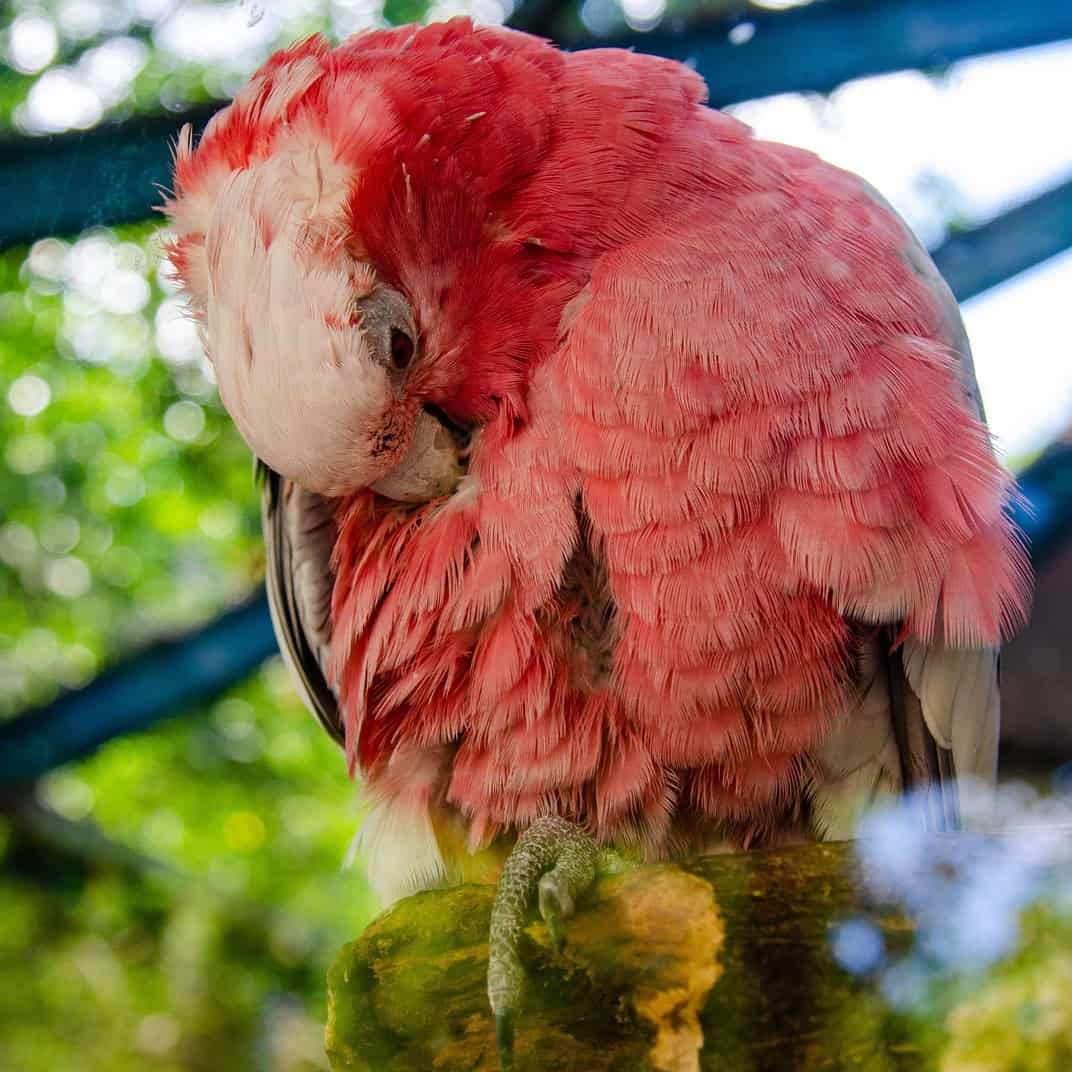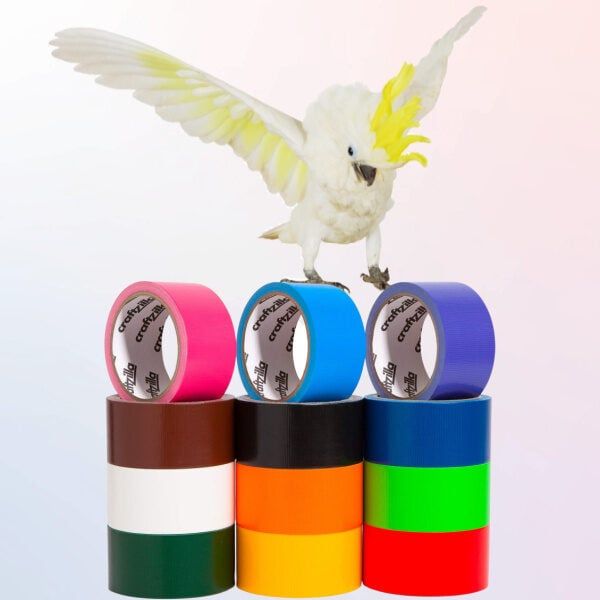
What Are Some Grooming Tips for Maintaining Your Parrots Feathers?
Last Updated on by Mitch Rezman
Owning a parrot is a rewarding experience, but with it comes the responsibility of ensuring their health and well-being. One of the key aspects of parrot care is maintaining the health and appearance of their feathers.
A parrot’s plumage is not only a symbol of their beauty but also plays a critical role in their overall health, flight, and insulation.
In this article, we will dive into some essential tips for grooming your parrot, maintaining their feathers, and identifying problems before they escalate.
Owning a parrot is a joyful and fulfilling experience, but like all pets, they come with their own set of care requirements. One of the most important aspects of their care is keeping their feathers in optimal condition.
Proper feather care is vital not just for your parrot’s appearance but also for their health and happiness. Let’s dive into how you can maintain your parrot’s plumage and the steps to ensure their grooming needs are met.
Why Feather Care is Crucial for Your Parrot
A parrot’s feathers serve a multitude of functions beyond their vibrant beauty.
Feathers are crucial for flight, insulation, and protection from the elements.
Moreover, healthy plumage is a sign of a happy and well-cared-for parrot. Neglecting feather care can lead to various issues like feather plucking, skin infections, and even flight problems.
Therefore, maintaining your parrot’s feathers is a priority that should not be overlooked.
The Benefits of Regular Bathing and Misting
In the wild, parrots often engage in natural bathing rituals, which help them keep their feathers clean and conditioned.
This behavior helps remove dust, dirt, and dander that can accumulate on their plumage. Bathing or misting your parrot mimics this behavior and helps maintain the health of their feathers.
- Why is bathing important?
- Bathing keeps feathers clean and free from debris.
- It moisturizes the skin, preventing dryness and irritation.
- Regular baths help reduce feather dust, which can trigger allergies in both parrots and their owners.
How can you bathe your parrot?
You can either provide a shallow water dish for your parrot to bathe in or mist them with clean, lukewarm water. Misting should be gentle and not directly aimed at their face.
A routine of bathing or misting 2-3 times a week will suffice for most parrots.
Setting Up a Bathing Routine
It’s crucial to choose the right bath setup for your parrot.
Some parrots enjoy splashing around in shallow bowls, while others may prefer a gentle mist.
Use lukewarm water, as water that’s too cold or too hot can shock their system. Always monitor them during bath time and never use soap or chemicals—just pure water is enough.
Wing and Nail Trimming Techniques
Trimming your parrot’s wings and nails is a delicate yet necessary part of grooming. While some bird owners may prefer their parrots to fly freely, wing trimming can prevent injuries from accidental flying into windows or mirrors.
Safe wing trimming:
To safely trim your parrot’s wings, it’s essential to understand which feathers should be cut. The primary feathers (the longest ones at the tip of their wings) are typically trimmed, allowing them to glide safely but preventing full flight.
Nail trimming:
Keeping nails at a proper length prevents them from getting caught on cage bars or perches, which could lead to painful injuries. Use bird-specific nail clippers and be careful not to cut into the quick, the vein that runs inside their nails.
Dealing with Molting Seasons
Molting is a natural process where parrots shed old feathers and grow new ones. This process can happen once or twice a year, and it’s vital to help your bird through it.
During this time, parrots may appear scruffy, and their feathers may be more brittle.
Ensuring they have a balanced diet rich in vitamins like A, D, and E is essential during this period. Molting can be a stressful time for birds, so offer extra comfort, such as a mist bath to relieve any itchiness.
Recognizing and Addressing Feather Problems
Feather issues, such as plucking or over-preening, can be signs of underlying problems like stress, boredom, or even health issues. If your parrot is consistently plucking its feathers or if their feathers appear dull, broken, or discolored, it’s essential to take action.
What causes feather plucking?
Feather plucking can be caused by various factors, including:
- Stress or anxiety
- Nutritional deficiencies
- Lack of mental stimulation
- Environmental issues, like low humidity or improper lighting
If you notice persistent feather plucking, consult a veterinarian.
Feather plucking can lead to skin infections or damage to the follicles, preventing feathers from growing back properly.
Nutrition’s Role in Feather Health
A parrot’s diet plays a critical role in maintaining the health of their feathers. Feathers are primarily made of keratin, and a diet rich in proteins, omega-3 fatty acids, and vitamins A, D, and E will promote healthy feather growth.
Including a mix of seeds, nuts, fruits, and vegetables in your parrot’s diet ensures they get the nutrients they need for strong, shiny plumage.
Environmental Factors Affecting Feather Health
In addition to grooming and diet, your parrot’s environment also plays a role in feather health.
Parrots are sensitive to changes in humidity and light, so it’s essential to maintain a comfortable environment. Provide plenty of natural sunlight or use full-spectrum lighting to mimic their natural habitat.
Also, offer toys and activities that keep them mentally and physically stimulated, which can help prevent stress-related feather plucking.
When to Consult a Veterinarian
Feather problems can sometimes indicate underlying health issues. If you notice any abnormal feather loss, discoloration, or if your parrot begins plucking excessively, it’s time to consult a veterinarian.
Skin infections, parasites, or nutritional deficiencies may be at play, and early intervention is key to addressing these issues.
Conclusion
Feather care is an essential aspect of owning a parrot, impacting both their appearance and overall health. By maintaining a regular grooming routine, offering a balanced diet, and providing a stimulating environment, you can ensure your parrot’s feathers remain healthy and vibrant. Remember, healthy feathers are a reflection of a happy, well-cared-for parrot.
FAQs
1. How often should I bathe my parrot?
Most parrots benefit from bathing 2-3 times a week. However, some may prefer daily misting, especially in dry climates.
2. Is it necessary to trim my parrot’s wings?
Trimming wings is a personal choice for bird owners. It can prevent accidents, but some owners prefer to let their birds fly freely in a safe space.
3. What should I do if my parrot starts plucking its feathers?
Feather plucking can indicate stress or health problems. First, ensure their environment is stimulating, and consult a vet to rule out medical causes.
4. How can I tell if my parrot’s feathers are healthy?
Healthy feathers are shiny, vibrant, and intact. Dull, brittle, or broken feathers may be a sign of poor diet or health issues.
5. Can stress cause feather issues in parrots?
Yes, stress is a common cause of feather plucking and damage. Ensure your parrot has a calm, enriching environment to minimize stress.
Author Profile
Latest entries
 The Traveling BirdJune 26, 2025Can You Name 5 Parrot Species That Are Living Wild in the USA?
The Traveling BirdJune 26, 2025Can You Name 5 Parrot Species That Are Living Wild in the USA? Bird BehaviorJune 26, 2025How is it Parrots Are Problem Solvers Social Animals and Even Use Tools?
Bird BehaviorJune 26, 2025How is it Parrots Are Problem Solvers Social Animals and Even Use Tools? Bird & Parrot AnatomyJune 25, 2025How a Tiny Chemical Modification Makes Parrots Nature’s Living Paintings
Bird & Parrot AnatomyJune 25, 2025How a Tiny Chemical Modification Makes Parrots Nature’s Living Paintings PigeonsJune 20, 2025How Do Parrots Thrive in Cities Outside Their Native Habitats?
PigeonsJune 20, 2025How Do Parrots Thrive in Cities Outside Their Native Habitats?


